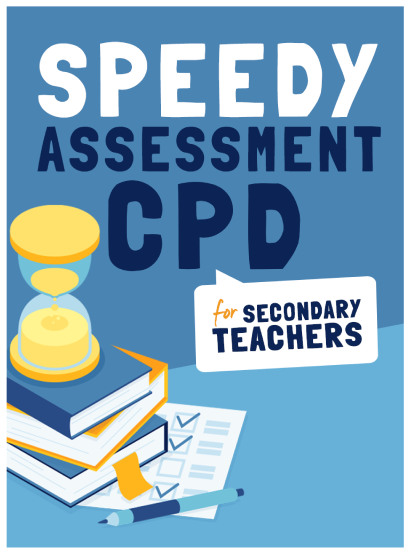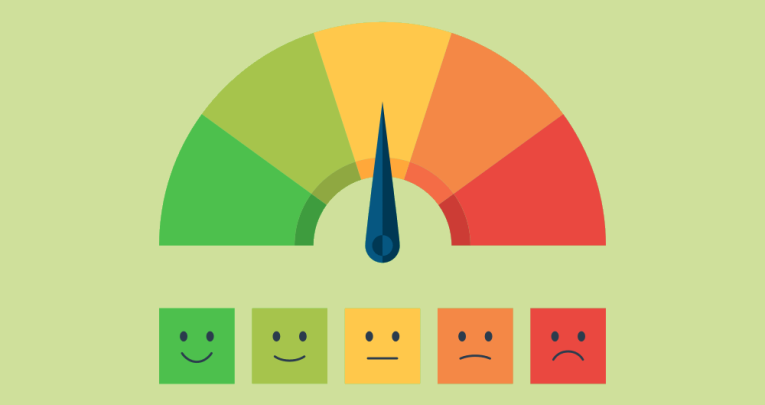Progress 8 – What is it and why does it matter to teachers?

Kit Betts-Masters explains how the stories told by your assessment data
can lead to constructive learning conversations with your students…

- by Kit Betts-Masters
- Science educator, physics specialist and content creator Visit website

What is Progress 8 and how is it calculated? Why does SLT care so much about it? Kit Betts-Masters explains all and tells us why it matters…
What is Progress 8?
Progress 8 can still seem somewhat mystifying to many teachers working at the coalface. However, in my experience, new teachers are keen to know more about it.
Put simply, Progress 8 is a massive national data collection and analysis process, based on students’ progress. It’s a measure of the difference between the grade each student receives, and what those students with similar KS2 results received nationally.
How is Progress 8 calculated?
To understand how Progress 8 is calculated, take this example:
A student attains a grade 7 in GCSE geography. Their KS2 scores were above average – let’s say 110 – in both English and maths.
Around the country, students also scoring 110 at KS2 received, on average, a GCSE grade of 6. This student would have a progress score of +1.
This measure might not seem all that obvious at first. However, the practice of comparing individual grades to national averages soon becomes second nature.
Try it yourself. What progress score would a student with that same 110 KS2 score get if they received a grade 5? The answer is -1.
The overall Progress 8 score assigned to each student is then calculated from an average of – wait for it – 10 progress scores…
Which subjects count?
Hold on, why not 8 progress scores? Well, you have to make up a group of 8 subjects for each student. Three of these are in the ‘open bucket’, which can be any GCSE or accredited equivalent.
A further three then make up the ‘EBacc bucket’. This can only comprise subjects included in the English Baccalaureate (namely the sciences, humanities and languages).
Finally, you must include the best English result and the maths GCSE result. This makes a total of 8 subjects, but 10 grades, since English and maths count as double.
Take all the individual Progress 8 scores across Y11, average them and you have the Progress 8 score for your school.
Why does your SLT care about Progress 8?
This overall Progress 8 score is arguably the single most important indicator of the quality of education at a given school, and perhaps the number that SLT are most likely to lose sleep over.
When discussing this with trainee teachers, it doesn’t take them long to realise that if their classes return a grade better than average, it can have a huge impact on their school’s overall performance.
This is why rich databases of assessment scores like SISRA exist, and it’s why SLTs are so keen for their staff to identify and focus on key groups of students within their classes or subject areas.
SPI, Progress 8 and residual scores
Being a data-driven teacher is a great way to stand out and further your career. Indeed, I hope that my own training has helped to empower new teachers to be more analytical and better placed to use the rich data at their disposal.
In one recent exercise, we examined data from some of my own classes, focusing on two key indicators – the residual grade and the subject progress index (SPI).
Both of these can be extremely powerful when embarking on impactful learning conversations with students.
SPI
The SPI is the closest that third-party databases get to being Progress 8 equivalents. It’s a measure of your students’ GCSE performance against their peers across the rest of the country. If it’s negative, that means they’re underperforming, given their ability.
Residual score
The residual score, on the other hand, tells you how well a student is doing against themselves in other subjects.
Some of my current Y10s, for example, are underperforming against their peers nationally (low SPI), but doing better in my subject than in other subjects at our school.
That’s good from my perspective, as the causes of their underperformance probably stem from wider issues that I have less agency over.
The students can, however, be praised and encouraged – “Well done in physics – if you can do it here, you can also do it in maths and English too!”
Keeping both of these scores in mind can give you insights into both the performance of your students, and broader challenges that you can play a part in addressing.
Case study
In one of my classes, two students were underperforming against national averages in my subject, but doing fine in their other subjects.
These were students I needed to do something about, and I was happy to admit responsibility for failing to adequately engage them.
I have since had those conversations to find out what I can do next to help them, and believe it’s worth modelling this practice to junior teachers.
Why assessment scores matter
Data tells stories. Personally, I enjoy the process of analysing my own performance, and using insights from those stories to modify and hopefully improve my practice.
Those assessment scores – be it Progress 8, SPI, residual grades – are all irrefutable pieces of evidence that attest to the quality of the learning taking place in your classroom.
When you achieve above-average Progress 8 scores for your class, it’s something to be proud of.
You need to understand what the data returned by your groups is telling you. You should be able to see progress over time and fully account for your students’ grades.
Those numbers you see in the spreadsheets? Each one represents a genuine improvement in the life opportunities of real people. We’re all in it together, and everyone counts.
Kit Betts-Masters is a lead practitioner for science and produces physics, education and technology videos for YouTube. For more information, visit evaluateeverything.co.uk







